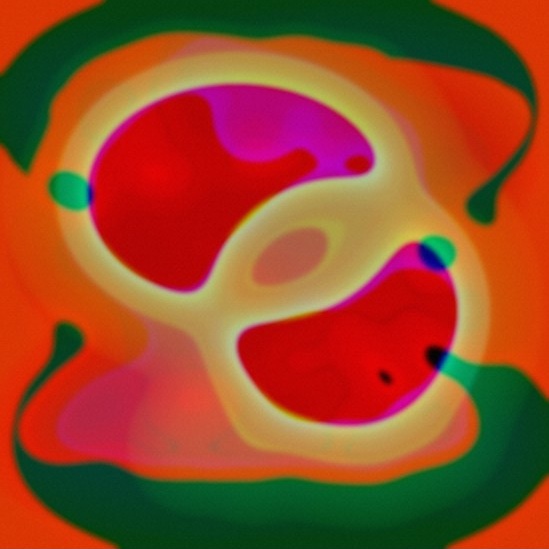Prognostic marker for gastric cancer
While chemotherapy is recommended for advanced gastric cancer, there are no clear criteria for adjuvant chemotherapy in early stage gastric cancer. To identify potential biomarkers that could help select candidates for chemotherapy, James Goldenring, M.D., Ph.D, Ki Taek Nam, DVM, Ph.D., and colleagues at Seoul National University, examined gene expression in lesions from patients with gastric cancer and its precursor lesions, IM (intestinal metaplasia) and SPEM (spasmolytic polypeptide-expressing metaplasia).
They found 858 genes with differential expression between normal and metaplastic cells and several new biomarker candidates for IM and SPEM. Expression of CDH17 – a member of the cadherin family of cell adhesion molecules – was increased 156-fold in IM and nearly 8-fold in SPEM compared to normal cells. Further analysis showed that patients with stage I cancers expressing CDH17 had a significantly increased 5-year survival.
Their results reported in the July issue of Gastroenterology suggest that CDH17 is an independent prognostic factor in patients with stage I disease and could be a useful biomarker for determining which early stage patients might benefit from chemotherapy.
— Melissa Marino
Putting the squeeze on cell division
The division of a cell’s cytoplasm (cytokinesis) is initiated by a band of proteins – the cytokinetic ring – that must be in the right place at the right time to ensure that the cell contents are divided equally between two new daughter cells.

Wellcome Images
Kathy Gould, Ph.D., and colleagues are studying the mechanism of cytokinesis using yeast cells and have focused on Cdc15, an essential protein that contributes to the linkage of the cytokinetic ring to the membrane during cytokinesis. In the July 9 issue of Molecular Cell, the researchers show that Cdc15 dephosphorylation is one cue triggering cytokinetic ring assembly. They found that Cdc15 is phosphorylated on many sites, and this phosphorylation limits its interactions with other cytokinetic proteins and the cell membrane. In Cdc15 mutants with reduced phosphorylation, the protein accumulated prematurely at the division site bringing with it other cytokinesis proteins.
The results suggest that phosphoregulation may be widely employed by related proteins to properly time their linking of the cell membrane to the cytoskeleton in many cellular processes.
— Melissa Marino
Intoxicating images of nasty toxin
Clostridium difficile, the primary cause of hospital-acquired diarrhea and antibiotic-associated diarrhea, secretes two large exotoxins – TcdA and TcdB – responsible for its virulence. The toxins are members of the large clostridial toxin (LCT) family of virulence factors that can cause severe and sometimes lethal cases of sepsis, toxic shock and gas gangrene. However, little is known about the structure of these toxins.

Borden Lacy, Ph.D., Melanie Ohi, Ph.D., and colleagues imaged these toxins with electron microscopy and show, in the July 27 Proceedings of the National Academy of Sciences, that TcdA and TcdB share many structural features. They then determined a 3-dimensional structure for TcdA and mapped the organization of its functional domains, finding a “pincher-like” head (likely responsible for penetrating the cell membrane) and two tails (which represent enzymatic and binding domains).
Because the members of the LCT family share many aspects of sequence and function, knowing these structures may offer insights into how all members of the LCT family “intoxicate” and damage mammalian cells.
— Melissa Marino
Targeting TLR for diabetes transplant
Transplantation of isolated insulin-producing islets (instead of whole pancreas) is an attractive therapeutic option for patients with type 1 diabetes. But early failure of islets grafted into the liver – considered the best site for normalizing blood glucose – remains a problem.
Dengping Yin, M.D., Ph.D., and colleagues previously showed that islets transplanted into the hepatic portal vein form clots – reducing blood flow to the liver and inducing local inflammation, which results in islet loss. Now, the researchers have probed the role of inflammatory signaling through the Toll-like receptor 4 (TLR4) in a mouse model of intraportal islet transplantation.
They report in the July American Journal of Transplantation that TLR4 on donor islets interacts with endogenous pro-inflammatory signals including the protein HMGB1 and plays a role in early graft failure. Eliminating donor-derived TLR4 (by using islets from knockout mice) or blocking HMGB1 inhibited local inflammation and enhanced islet graft viability. The findings suggest that TLR4-targeted therapy may prevent early graft failure following intraportal islet transplantation.
— Leigh MacMillan
We welcome suggestions for research to highlight in Aliquots. The items should be primary research articles (no reviews, editorials or commentaries) published within the last two months in a peer-reviewed journal. Please send the article citation (PDF if available) and any other feedback about the column to: aliquots@vanderbilt.edu.
Past Aliquots
June 22, 2012
June 8, 2012
May 11, 2012
April 27, 2012
April 13, 2012
March 30, 2012
March 16, 2012













